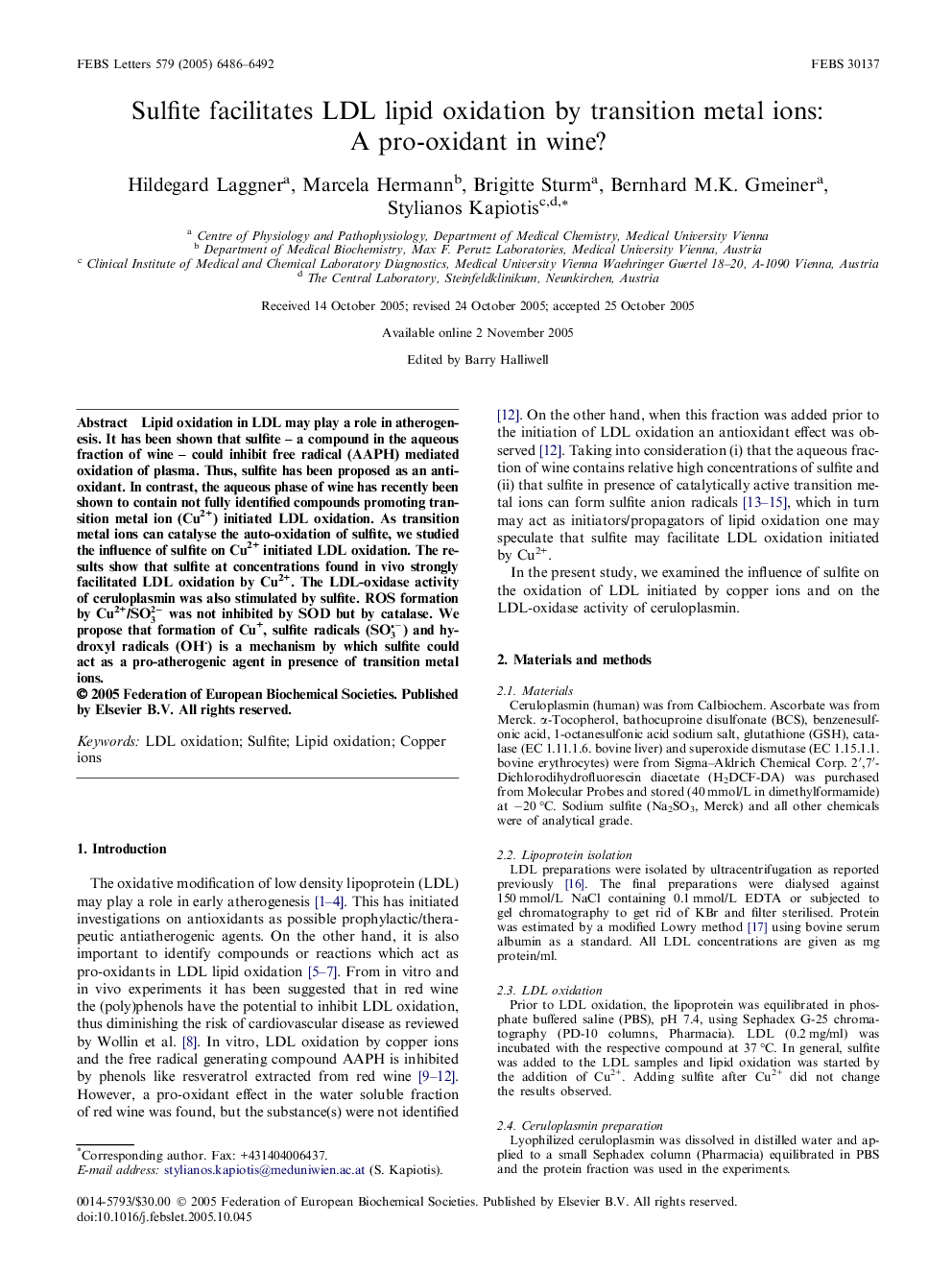| Article ID | Journal | Published Year | Pages | File Type |
|---|---|---|---|---|
| 2051807 | FEBS Letters | 2005 | 7 Pages |
Lipid oxidation in LDL may play a role in atherogenesis. It has been shown that sulfite – a compound in the aqueous fraction of wine – could inhibit free radical (AAPH) mediated oxidation of plasma. Thus, sulfite has been proposed as an antioxidant. In contrast, the aqueous phase of wine has recently been shown to contain not fully identified compounds promoting transition metal ion (Cu2+) initiated LDL oxidation. As transition metal ions can catalyse the auto-oxidation of sulfite, we studied the influence of sulfite on Cu2+ initiated LDL oxidation. The results show that sulfite at concentrations found in vivo strongly facilitated LDL oxidation by Cu2+. The LDL-oxidase activity of ceruloplasmin was also stimulated by sulfite. ROS formation by Cu2+/SO32- was not inhibited by SOD but by catalase. We propose that formation of Cu+, sulfite radicals (SO3−) and hydroxyl radicals (OH) is a mechanism by which sulfite could act as a pro-atherogenic agent in presence of transition metal ions.
